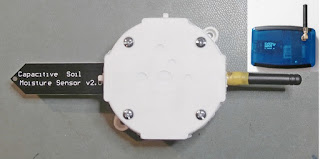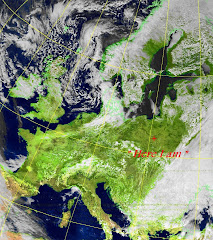🔘 Almost 11 years 🗓 have passed since I last used my low-power transmitter power amplifier ( see 08.05.2013 ) based on the TDA2030 class AB audio 🔉 amplifier i.c. ( see 22.02.2013 ). Since then several data 💾 transmission modes, e.g., FST4W, have become popular among radio amateurs who are active transmitting on the LF 2190m/136KHz 〰 ( longwave ) 📻 band. I also have high power transmitting equipment for that frequency band. However I wanted to conduct a simple test by transmitting a very low power beacon signal using FST4W to determine at what distance it might be received.
My setup for the test was the phasing exciter ( see 02.11.2017 ) as the signal source driving the low power amplifier. The antenna 🗼 was my usual one for the 2190m band; a 47m long x 13.5m tall base and end-loaded inverted 'L' ( Ꞁ ) ; see 19.02.2010 et al. The transmit frequency ∿ was 136.13KHz, transmitter output power only 3.5 watts, ( similar to the power consumption of a small LED lamp 💡 ), and beacon transmission, consisting of my callsign, location and power level, sent at 5 minute intervals.
I began sending beacon transmissions during the evening of 21.01.2024. Previously, during the tests on 8 May 2013, ( albeit using a different mode ), the reception distance had been only 17 kms. I was doubtful if anyone beyond that range would receive my signal. So I was very surprised, when, at 2120 utc 🕤, a reception report was posted 📮 on wspr rocks ☁ that my beacon signal had been received 📶 near Chemnitz in Germany, at a distance of 582 kms. Incredible and amazing 😀 !
LF = Low Frequency.
135.7-137.8KHz ( 2190m band ) is the lowest frequency band allocated to radio amateurs.





























